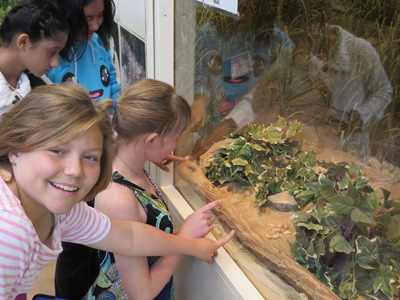News & Events
New Museum of Natural Sciences Outreach Program delights kids
 Over the past two months, the new Museum of Natural Sciences (MNS) Outreach Program welcomed elementary school classes from all over Saskatchewan to take part in interactive, hands-on science activities on campus.
Over the past two months, the new Museum of Natural Sciences (MNS) Outreach Program welcomed elementary school classes from all over Saskatchewan to take part in interactive, hands-on science activities on campus.
The pilot program was created through a partnership between the MNS and the Science Outreach Office (College of Arts & Science), with financial support from SIGA.
Led by the Science Outreach Team, grade-school students explored the exhibits in the MNS using an innovative self-paced, interactive iPad tour. The interactive tour, which includes additional information about the displays along with pictures, videos and trivia questions, engages students as they progress through the museum.
Following the tour, students took a closer look at the invertebrate group in a science-teaching laboratory in the Department of Biology. Students performed behavioural experiments on mealworms, and had a chance to observe mealworm morphology using a dissecting microscope.
Over 1,200 students participated in the 2014 pilot program. Teachers and students alike have given overwhelmingly positive feedback.
“I loved how many activities they had,” wrote one Grade 8 student from St. Edward School. “I also love how they allowed us to see the animals along with the learning part on the iPad.”
“Of all of our field trips over the past 2 years, this was definitely the most thoroughly planned and exciting!” wrote a home school teacher.
The MNS and Science Outreach Office hope to secure sponsorship for next spring, so this education opportunity program can continue to get young students excited about learning science and considering a future in the sciences.
The Museum of Natural Sciences is open to the public and sees an average of 1,500-2,000 visitors each month. It provides a stunning account of Earth’s evolutionary history, with highlights including live plant and animal displays, life-size dinosaur models and an extensive collection of rocks, fossils and minerals. Each of the six major groups of animals (invertebrates, fishes, amphibians, reptiles, mammals and birds) are represented in the museum, providing an excellent resource for teaching students about evolution and the diversity of living things.